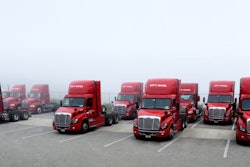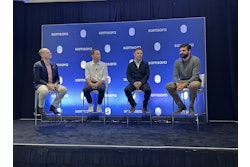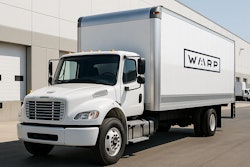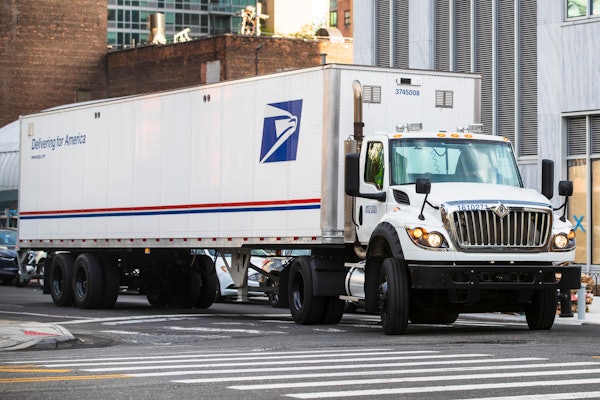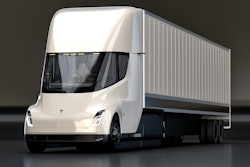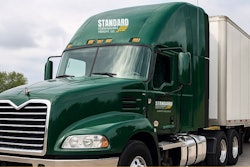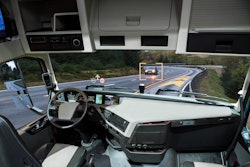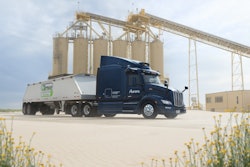When people think about autonomous vehicles (AVs), many picture sedans moving down the road with a driver’s seat but no driver behind the wheel because that is a reality with robo-taxis like those on the streets of downtown Phoenix, Arizona. There are even some tests of autonomous Class 8s over the road.
But one unique application of autonomy is in the distribution yard. It’s an environment that is in some ways simpler than on-road applications but more complex in other ways.
That’s why Outrider has built a safety system designed for driverless movement of freight in mixed-traffic trailer yards.
The developer of autonomous yard operations is leveraging artificial intelligence in its Outrider System to safely maneuver trailers in mixed-traffic logistics yards with a high degree of precision by applying 14 proprietary safety mechanisms, including redundant hazard detection, fail-safe hardware redundancies and real-time health monitoring, developed to address more than 200,000 yard-specific hazards, allowing for entirely unsupervised operations.
Outrider Founder and CEO Andrew Smith said yards are a fantastic place for autonomy, and AI is making these safety systems more capable than ever.
“(Yards are) a very dangerous area of the supply chain because this is where people are getting in and out of trucks and operating around 80,000-pound pieces of metal day and night in all weather conditions. Types of hazards we see in yards are slip and fall accidents, collisions, human-driven trucks pulling away from docks with people still in the trailers,” Smith said. “(Yards are) a confined, repetitive environment. It's a very natural place for autonomy.”
Smith said Outrider has the same capabilities as autonomous taxi companies like Waymo, but it has gone further to develop technology that creates an envelope of safety around truck-trailer combinations in what is basically a big parking lot with defined roadways but with many variations that take place like drivers parking trailers, pallets getting placed and workers interacting at loading docks, etc.
Redundancy matters
Outrider has executed hundreds of thousands of autonomous trailer moves over the past five years, collecting millions of data points along the way to determine its growing list of edge case hazards and ensure its system addresses them.
One of the biggest is collisions, Smith said.
Outrider has engaged a multi-sensor system to ensure there is no contact with humans or equipment or any other hazards in the yard. And because AI-systems can potentially fail, Outrider has backed up its AI-driven perception stack with a redundant safety system to detect anomalies in the environment, override unsafe behaviors and bring the autonomous vehicle to a stop when necessary.
“There can be phantom obstacles, mistakes in AI, etc., and so we need to make sure that there's redundancy in the system,” Smith said. “We build redundancy into every aspect of the system because when you've got a yard truck connected to a 53-foot-long trailer, you can have an 80,000-pound robot moving around a yard, so we take our job very seriously in creating redundancy in the system and meeting existing standards but really creating new standards for this application of robotics.”
Certified safety
Following a preliminary assessment, TÜV SÜD has approved the process Outrider follows to allow for driverless robot operations. Outrider’s safety approach is aligned with the global third-party testing and certification organization’s AV Conformity Framework requirements.
This framework, based on current industry standards and best practices, evaluated essential elements such as Hazard Analysis and Risk Assessment (HARA), coverage and safety analysis, testing and the safety case. Through a methodological showcase of the FuSa (Functional Safety) workflow, TÜV SÜD determined that Outrider's functional safety approach was aligned with its requirements.
“Given the lack of standards for yard automation, Outrider developed the safety approach that will set the standard in the industry,” said Outrider Chief Technology Officer and Executive Vice President of Engineering Vittorio Ziparo. “We used established standards for functional safety in road vehicles outlined in ISO 26262 and safety in autonomous vehicles outlined in ISO 21448 as the starting point for a proprietary and comprehensive safety approach for autonomous yard operations.”
Outrider will continue to monitor the effectiveness of its safety approach.
The Outrider System runs on top of Outrider-approved autonomy hardware and electric yard truck platforms from vendors like NVIDIA, Orange EV, RH Sheppard, and Yaskawa. For safety-critical systems and components, partners work closely with Outrider’s development team to review and approve Outrider’s safety case for the use of their products in driverless operations.
The system is offered as a subscription service, including the autonomy stack, cloud-based management software, automated trailer inventory tracking and 24/7 support. It is capable of connecting trailer brake and electric lines with no modifications to trailers using its TrailerConnect robotic arm or by integrating with auto-coupling systems designed for captive trailer fleets.
Commissioning and deployment of the latest-generation driverless yard trucks will begin with select enterprise customers in the second half of 2025. Outrider is taking orders for deployments in 2026 and 2027.
A trucking perspective
Outrider integrates with warehouse, yard and transportation management systems.
Smith said one major benefit of having autonomous yard operations at distribution hubs is that it not only enhances the efficiency of yard itself, but because its systems connect to TMS platforms, it can dramatically reduce the wait time for over-the-road truckers entering and exiting the yard.
Using these systems, Outrider knows exactly which trucks are coming in and can initiate pre-staging for trailer pickups near the entrance so a driver can drop a trailer as it comes in and pick up another with the least amount of friction possible.
“Outrider has been focused on this critical link in the supply chain, which is the distribution yard,” he said. “This linkage is critical to how we move billions of freight through the supply chain and the efficiency of what happens within the yard as a ripple effect with all over-the-road trucking and the global supply chain.”



